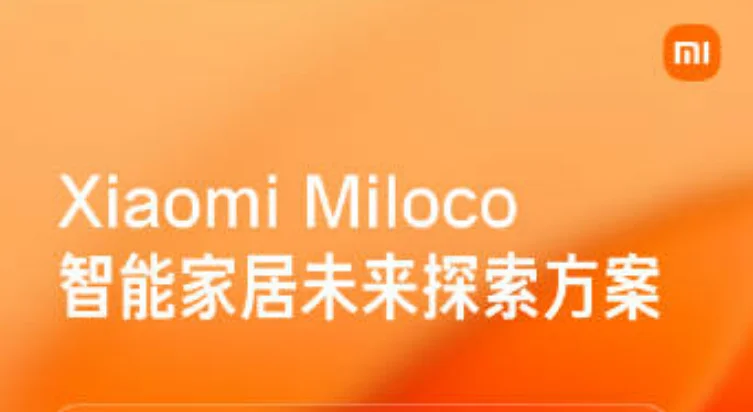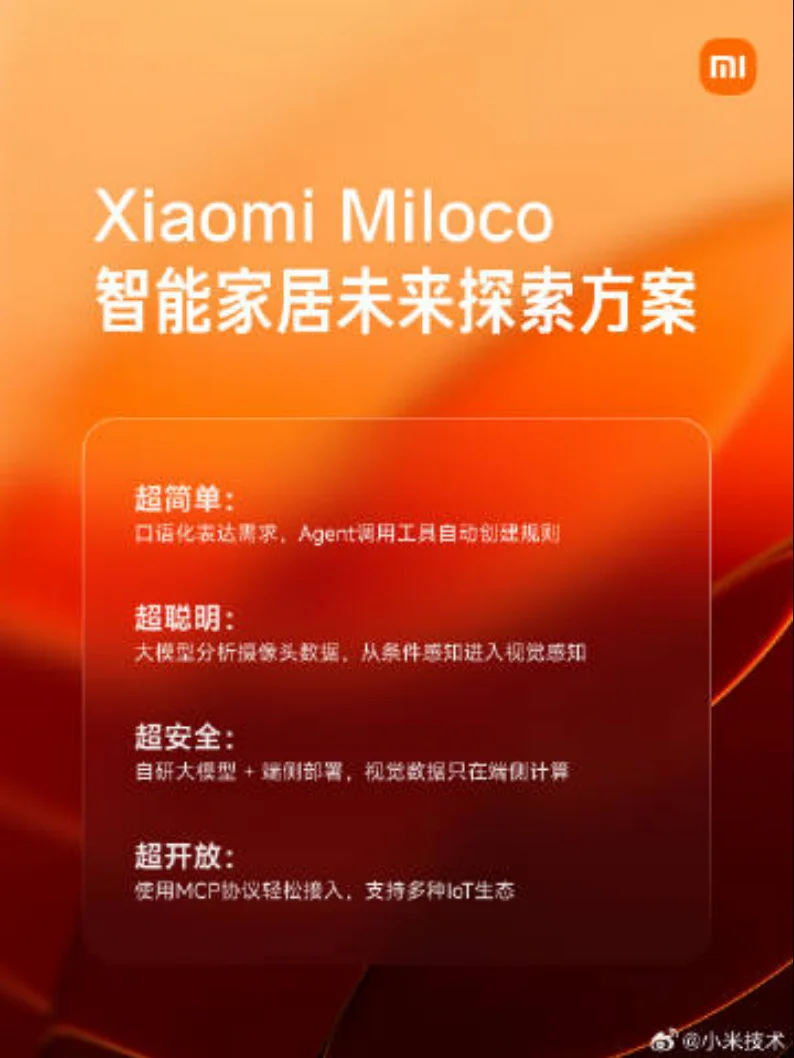Xiaomi Miloco: Revolutionizing Smart Homes with Local AI
Smart Homes Local AI. # Xiaomi Miloco: Revolutionizing Smart Homes with Local AI and Open Source
Imagine a future where your home anticipates your needs, understands your commands in plain English, and automates tasks without complicated setups. That future is here with Xiaomi Miloco, or Xiaomi Local Copilot. Unveiled on November 14, 2025, this innovative solution uses large language models (LLMs) to create an intuitive and autonomous smart home ecosystem. And the best part? It’s open source! Let’s dive into how Xiaomi Miloco is revolutionizing smart homes with local AI and open source.
What is Xiaomi Miloco?
Xiaomi Miloco is designed to be a local “copilot” for your home. Unlike cloud-based assistants that rely on constant internet connections, Miloco operates locally, prioritizing privacy and efficiency. It uses Xiaomi Home cameras as its primary source of visual information, combined with an internally developed LLM, to seamlessly connect and control all your IoT devices. This local operation is key, mirroring the principles discussed in our post about Xiaomi Mi Home: Immersive 3D View Transforms Smart Homes.

The Power of MiMo-VL-Miloco-7B
At the heart of Miloco lies the MiMo-VL-Miloco-7B model, a cutting-edge 7-billion-parameter vision-language model (VLM). This model builds upon Xiaomi’s original MiMo-VL-7B, optimized specifically for home environments. According to its GitHub repository, MiMo-VL-Miloco-7B excels in gesture recognition and understanding of home scenes, surpassing benchmarks like MMMU (70.6%) and VideoMME (70.8%). This allows the system to “see” and “understand” what’s happening in your home.
Imagine this: Miloco detects that the kids have arrived home from school and automatically adjusts the lighting, sets the thermostat to a comfortable temperature, and even prepares a reminder to start dinner later. This level of sophisticated automation is now a reality.
Miloco’s Architecture: Four Key Layers
Miloco’s architecture is built on four fundamental layers:
- Interaction: Users interact with the system using natural language, much like using ChatGPT, but tailored for home commands.
- Perception: Integrates visual data from cameras for real-time contextual analysis.
- Ecosystem Compatibility: Extends to the Mi Home ecosystem, supporting over 989 million IoT devices connected to Xiaomi’s platform (as of June 2025), and integrates with open-source communities like Home Assistant via the standardized MCP protocol. This makes it highly versatile, similar to the promise of HyperOS 3 Xiaomi Pad 7: Android 16 Update is Here!.
- Security: Ensures that all processing occurs locally, safeguarding family privacy by not sending data to external servers. This edge-side processing is a major advantage.
Advantages of Miloco: Effortless Intelligent Automation

Xiaomi news
One of the most appealing aspects of Miloco is its ability to simplify smart home automation. Traditional systems like Google Home or Amazon Alexa require users to manually define “if-then” rules, limiting creativity and flexibility. Miloco, on the other hand, leverages the power of LLMs to infer and execute rules from simple descriptions.
For instance, you can simply say, “Make sure the house is ready for a family movie night,” and the system will dim unnecessary lights, lower the blinds, adjust the thermostat, and turn on the projector. It’s that easy! This level of intelligent automation can be compared to the AI potential highlighted in Xiaomi MiMo: AI Genius Hired to Revolutionize Devices.
Everyday Scenarios
This complex automation extends to various everyday scenarios:
- Proactive security monitoring: Detecting intrusions using visual AI.
- Energy optimization: Turning off inactive devices automatically.
- Wellness routines: Reminding you to hydrate based on the local weather.
While some users on Reddit have noted a potential increase in energy consumption due to constant visual processing, official announcements claim that Miloco reduces the need for additional sensors, and its edge-side execution is more efficient than cloud-dependent solutions.
Privacy First
When it comes to AI privacy in smart homes, Miloco shines. By processing data locally with the MiMo-VL-Miloco-7B model, it prevents sensitive information leaks, a recurring concern with competitors. Xiaomi emphasizes this commitment in its GitHub repository, inviting users to report vulnerabilities directly to the team. This dedication to security sets it apart in the smart home market.
The Power of Open Source: Collaboration for the Future
What truly makes Miloco disruptive is its open nature. Available on GitHub (xiaomi-miloco for the framework and xiaomi-mimo-vl-miloco for the model), it allows developers worldwide to contribute. The release includes quantized versions like MiMo-VL-Miloco-7B-GGUF, optimized for low-power hardware, and supports inference with tools like vLLM and SGLang.
Since its announcement, the community response has been enthusiastic. On X (formerly Twitter), posts from influencers like @TECH__MUKUL highlight its seamless integration, while others like @ttoday_it praise its versatility. In Reddit’s r/LocalLLaMA, discussions compare MiMo-7B-RL with models like OpenAI’s o1-mini, noting its superiority in home-related reasoning. Xiaomi is actively seeking talent, encouraging CV submissions to xiaomi-miloco@xiaomi.com, accelerating its evolution. This aligns with Xiaomi’s philosophy of democratizing technology.
Xiaomi Miloco represents a paradigm shift in smart home technology. By combining advanced AI with an open-source approach, Xiaomi is empowering users and developers alike to create a more intelligent, secure, and personalized home experience. If you’re looking for efficiency, privacy, and innovation, Miloco is the next step in transforming your living space.







